To give a full and complete history of the LGBTQ movement would require thousands of pages. Entire books have been written on pieces and parts of the history for equality among gay, lesbian, bisexual, queer, and transgender Americans. Here we try to give a brief but holistic overview to understand why everyone pulls out their favorite rainbows and celebrates Pride month or weekend in their local area.
The LGBTQ movement as we know it today did not exist until the 1960s and 1970s, although groups were organized earlier than this time. This does not mean, however, that discrimination was new to the 20th century. For years, laws existed (and still exist) that made sexual preference and anything outside of a heteronormative reality a criminal activity.
Discrimination Faced by the LGBTQ Community
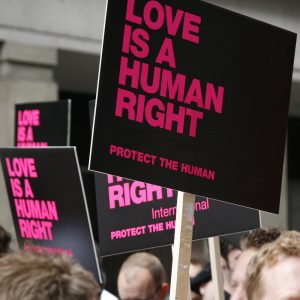 Discrimination has existed for centuries in America and continues to this day as states continue to pass bills that target the bathroom habits of transgender people and the continued denial of the legality of gay marriage, even after the Supreme Court declared it legal and constitutional. The problem in illustrating the reality of discrimination is not in finding examples, but of narrowing down those example to something digestible.
Discrimination has existed for centuries in America and continues to this day as states continue to pass bills that target the bathroom habits of transgender people and the continued denial of the legality of gay marriage, even after the Supreme Court declared it legal and constitutional. The problem in illustrating the reality of discrimination is not in finding examples, but of narrowing down those example to something digestible.
Marriage
In 1995, Utah was the first state to pass a type of Defense of Marriage Act (DOMA) before even the federal government passed its own legislation by the same name. By 2003, 37 states had their own version of DOMA. As the laws were challenged in court in later years, some states began to pass Constitutional Amendments to “protect” marriage.
In a 2003 report for the Journal of the History of Sexuality, Barry Adam of the University of Windsor equates this to a moral panic. While the United States was working to reduce or refuse rights to the LGBTQ community, other locations within the industrialized world were expanding them. To be accurate, not all countries were fair, even-handed, or quick in their loosening of discriminatory rules.
Employment
It has long been known that to be outed as gay or lesbian, let alone transgender, was to result in a near-immediate loss of employment. It wasn’t until 1998 that President Bill Clinton added “sexual orientation” to an executive order for the federal government’s equal opportunity employment policy that the LGBTQ community had any amount of protection at the federal level. It was not until 2009 that President Barack Obama amended the order to include gender identity. Unfortunately, because this protection is not a federal law and only governs how the federal government must treat applicants, employment discrimination is still very real for many people.
In September 2011, the American Journal of Sociology published a study regarding the ongoing employment discrimination of the LGBTQ community, in this case focusing on openly gay men. Pairs of resumes were submitted to more than 1,700 job postings in seven states. In each pair, one was assigned prior job experience in an openly gay campus organization. The results showed that distinct discrimination occurred, especially in regions with little to no anti-discrimination laws.
Healthcare
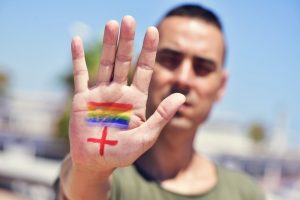 In a 2007 book titled The Health of Sexual Minorities, one chapter focuses solely on an ongoing problem that persists until today. While the overall LGBTQ community may have better health outcomes in the years since the HIV and AIDS crisis first swept the country, minorities within the community continue to struggle. Lack of access to healthcare, financial resources, and education all contribute to the disparity between the health outcomes between white people and people of color within the LGBTQ community.
In a 2007 book titled The Health of Sexual Minorities, one chapter focuses solely on an ongoing problem that persists until today. While the overall LGBTQ community may have better health outcomes in the years since the HIV and AIDS crisis first swept the country, minorities within the community continue to struggle. Lack of access to healthcare, financial resources, and education all contribute to the disparity between the health outcomes between white people and people of color within the LGBTQ community.
Asian-American, African-American, and Hispanic gay men account for higher percentages of AIDS and HIV-related deaths when compared to their white counterparts. Some of this disparity is regional with the South being home to some of the highest numbers of AIDS and HIV infected gay men in the country, especially African American gay men. Lack of information and private or public organizations like those seen in New York City or San Francisco contribute to the problem and the death toll, according to the New York Times.
Regardless of the strides made in the past 50 or more years since the Stonewall riots, discrimination continues to haunt the LGBTQ community, especially among minorities and the poorer, working classes. This is not new information to those who live this reality. For anyone who celebrates Supreme Court decisions and feels the work is done, it’s time to wake up.
A Movement Begins
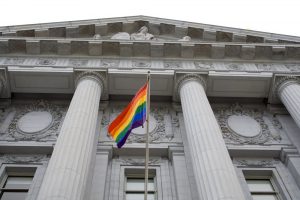 Even in the face of on-going discrimination and atrocities against the LGBTQ community, progress has been made, although any progress is too slow for those killed or forgotten during the struggle.
Even in the face of on-going discrimination and atrocities against the LGBTQ community, progress has been made, although any progress is too slow for those killed or forgotten during the struggle.
Before Stonewall Inn
The Stonewall Inn riots, often called the beginning of the modern LGBTQ fight for equality, was an explosive resistance but it was not the first. In the 1960s, student groups on a handful of college campuses around the country were forming. The first known group was Columbia University’s Student Homophile League (SHL), followed in 1968 by the second group, a chapter of the SHL formed at Cornell University at Ithaca.
These groups helped, in part, to lay the groundwork for a willingness to resist and support resisters among students. They took the lead, pre-Stonewall, in asserting a sense of gay pride and helped make liberation and the end of discrimination important to their fellow students who were not gay or lesbian.
The Stonewall Inn Riots
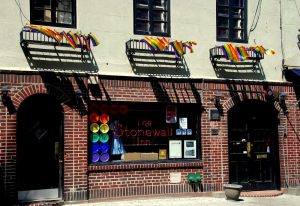 No history of the modern LGBTQ movement would be complete without a look at the Stonewall Inn riots beginning on June 28, 1969. From the perspective of the views of the time, it was a night like any other. Police were called in to harass and move the groups of gay, lesbian, and transgender people who gathered in the Stonewall Inn, one of the few bars and public spaces that might be safe for them. Typically, police officers would arrive, arrest the bartenders for serving alcohol without a license, and the patrons who might be gay, lesbian, or transgender people, would scatter or be arrested for not wearing “gender appropriate” attire. This law targeted anyone “different” from the norm.
No history of the modern LGBTQ movement would be complete without a look at the Stonewall Inn riots beginning on June 28, 1969. From the perspective of the views of the time, it was a night like any other. Police were called in to harass and move the groups of gay, lesbian, and transgender people who gathered in the Stonewall Inn, one of the few bars and public spaces that might be safe for them. Typically, police officers would arrive, arrest the bartenders for serving alcohol without a license, and the patrons who might be gay, lesbian, or transgender people, would scatter or be arrested for not wearing “gender appropriate” attire. This law targeted anyone “different” from the norm.
While this was what usually happened, the arrests and scene at the Stonewall Inn ended very differently. This time, instead of running or accepting their arrest, people got angry. Onlookers, watching people forced into police wagons, threw bottles, expressed their rage, and started a riot. The police were not used to this behavior and barricaded themselves in the bar. Over the course of five days, the riots continued including setting the bar on fire.
The riots are considered by many historians to be a spontaneous act born of anger and frustration with unceasing discrimination from New York City police. Any and all safe havens for the LGBTQ community at the time were under constant attack and surveillance. Existing laws prohibited sexual relationships, specific dress, and solicitation. It was almost too easy to be targeted and arrested. People were fed up and decided to stop running.
Resistance in Action
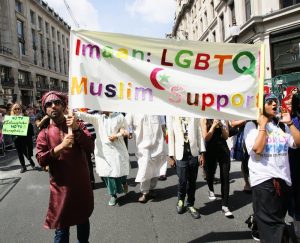 The Stonewall Inn riots weren’t the first time gay and lesbian people came together in protest but they were certainly the most memorable and the one that received the most attention. Over the years after the riots, groups formed to resist discrimination, fight back, force change, and gain acceptance. The fight continues today but progress has been made. Organizations in New York and California have taken up the mantle of resistance and forward movement.
The Stonewall Inn riots weren’t the first time gay and lesbian people came together in protest but they were certainly the most memorable and the one that received the most attention. Over the years after the riots, groups formed to resist discrimination, fight back, force change, and gain acceptance. The fight continues today but progress has been made. Organizations in New York and California have taken up the mantle of resistance and forward movement.
Over time, national organizations like GLAAD, the Human Rights Campaign, and many others have formed to give a voice to the people and the political movement. What resistance looks like depends on differing philosophies. Groups and individuals have taken on the resistance in different ways from assimilation to antagonistic.
Some organizations seek acceptance and a type of assimilation into the cultural norms. They use reminders to straight people that the LGBTQ community is “just like you.” This offers a sense of familiarity and safety for those who may look on the community as “other” or different. Other groups, like Gay Shame, use a completely different strategy. These groups tend to reject all social norms, resisting what it considers pandering to cultural and class elites. Over the years, the group has taken on a more antagonistic view, even within the LGBTQ community. They reject the argument of “we’re just like you” and instead demand acceptance of differences through spectacle, performance, and sheer visibility.
Gay Pride
 The first gay pride march was held on the one year anniversary of the Stonewall Inn riots. It was organized by Brenda Howard, known as the mother of the gay pride march. She also helped coordinate a week-long series of events that morphed into what we know as Pride Month. The first march took place on Christopher Street and ended, 51 blocks later, at Central Park. People held signs and walked together in unity and remembrance.
The first gay pride march was held on the one year anniversary of the Stonewall Inn riots. It was organized by Brenda Howard, known as the mother of the gay pride march. She also helped coordinate a week-long series of events that morphed into what we know as Pride Month. The first march took place on Christopher Street and ended, 51 blocks later, at Central Park. People held signs and walked together in unity and remembrance.
This march wasn’t the first time LGBTQ people had come together to protest discrimination by the government. It was a way to remember the riots the previous year and the start of a much more organized assembly of the LGBTQ community to show pride in who they are and to reject shame or the need to hide.
As the Gay Pride march took on meaning and growing popularity among the LGBTQ community, Gay Pride Day became a more formal commemoration of the Stonewall Inn riots. It was typically held on the last Sunday in June, but this was flexible depending on the area planning the events. The marches and the day of commemoration/celebration spread from city to city over the next several years.
Becoming Pride Month
Over time, Gay Pride Day grew to Gay Pride Month and eventually Pride Month as we know it now. It is typically celebrated in June, although international communities celebrate Pride at different times. A variety of activities are planned for Pride Month events, depending on the area where you live. Some of these events include parades, rallies, marches, picnics, parties, workshops, concerts, meetings, and film screenings. Memorials are often conducted for those lost to HIV or AIDS or through hate crimes during the previous year.
Only in recent history has Pride Month been officially acknowledged by the American government. Clearly, the celebration and festivities have continued without these official pronouncements, but they are striking if only for their infrequency. President Bill Clinton was the first to designate June “Gay and Lesbian Pride Month” in 2000. From 2009 to 2016, President Barack Obama declared June “Lesbian, Gay, Bisexual, and Transgender Pride Month.”
Showing Pride
 LGBTQ pride is recognized by the rainbow flag and, with a glance at Pride parade-goers, rainbow-flavored everything else. Depending on the area and the specific event, many people who attend Pride Month in their local area bring the entire family from young to old. Some people use Pride events to protest ongoing discrimination and to bring attention to those in the LGBTQ community who still have not experienced the parity that others in the community may have. They also go to show a deep pride in themselves and in the community in general.
LGBTQ pride is recognized by the rainbow flag and, with a glance at Pride parade-goers, rainbow-flavored everything else. Depending on the area and the specific event, many people who attend Pride Month in their local area bring the entire family from young to old. Some people use Pride events to protest ongoing discrimination and to bring attention to those in the LGBTQ community who still have not experienced the parity that others in the community may have. They also go to show a deep pride in themselves and in the community in general.
The LGBTQ community is not a monolith. Each person has their own experience as a gay, lesbian, bisexual, transgender, or queer person. They face hardships from a cultural, religious, economic, and sexual identity framework depending on who they are, where they live, and where they come from. While progress has been made for many people within the community, there is still work to do.
Pride events are often seen as a celebration of the progression of the LGBTQ community. For those people who haven’t yet felt the progress, it’s still a protest. They live with discrimination as well as lack of access to medical care, mental health care, jobs, safe homes, and quality education. Marches, protests, rallies, and workshops continue to be important for community organizers who press forward for continued progress, however, slow it may be incoming.
Conclusion
The history of LGBTQ people within the United States is long and varied. They are not a new type of person to come into existence in the last few decades. They have been with us all along. It’s only in the last few decades they have rightly demanded, more forcefully than in the past, to be counted and treated as equals. We may live in a country that prides itself on equal treatment under the law, but it doesn’t do well in the practice of it.
The white LGBTQ community has managed to make strides, although not completely or perfectly, since the latter part of the 20th century. At the same time, though, LGBTQ people of color continue to face continued discrimination in ways that could measurably improve their lives and livelihoods if ended. Pride Month isn’t just a month-long celebration of the LGBTQ community. It’s also a visible reminder of the work left to do. Love is love, and we’re all worthy of life, liberty, and the pursuit of happiness.







